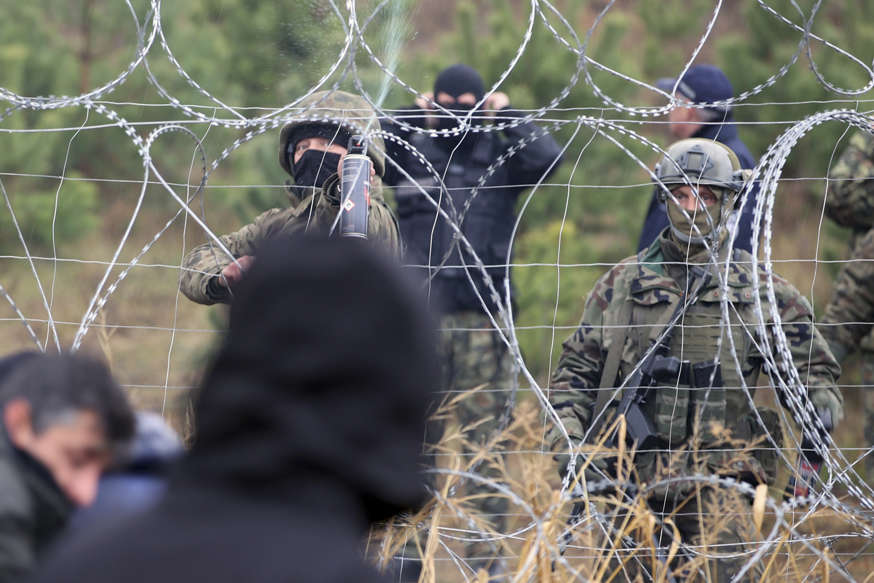The phenomenon of population losses, signaled by the National Institute of Statistics following the preliminary results of the census in Romania, is part of the trend of European demographic decline, but must also be related to specific causes, such as the response policies given by the ruling class to the crises caused by the transition and to the requirements of the West, Ilie Badescu, director of the Dimitrie Gusti Institute of Sociology of the Romanian Academy tells an interview with AGERPRES.
According to professor Badescu, population loss represents one of the persistent challenges of European-style modernity, but it is still a poorly researched phenomenon.
"My hypothesis is that this phenomenon, in its common part for all countries that face this, is an effect induced by the combined weakening of the ethnocentric and Christocentric order of modern societies. Until the 20th century, ethnocentrism (the adoption of one's own people and the national territory as a center of gravity and as a space of socio-professional and territorial mobility) was the dominant feature of the man from any meridian. The individual, even the most enterprising one, tied his destiny and therefore his chances to his own people and to the territory ruled by him (of the national space). Christianity offered communities of every kind and of every size a universal unity without dislocating their own ethno-spiritual center. It was, in other words, a restitutio in integrum of the human being in its individual and collective expressions," professor Ilie Badescu explains.
The director of the Institute of Sociology also talks about the "demographic winter", about the "social depression", about the way modern man relates to suffering, to material well-being, to suffering or to the option of couples for not having babies, the main cause of the decline of a community.
AGERPRES: Mr. Ilie Badescu, the National Institute of Statistics recently communicated the preliminary data of the 2021 census. The alarming data are those related to population losses. In Dolj, for example, these losses reach 61,000 people for the interval between the two censuses (2011-2021), i.e. about 10 pct of the county's population, and in Bucharest the absolute figure is even higher. What would this phenomenon be called and what explanation could be found for it?
Ilie Badescu: We should first make two clarifications. First: we will not refer, in our discussion, to the methodological aspects of the census (the communique itself is stingy with this section, although it exists in the report). I propose to limit the discussion only to the real phenomenon of population loss and its causes (even if we suspect an underrepresentation regarding its weight). The second clarification: all of Europe is losing population. So there is something common regarding the reasons that cause such losses and something entirely specific to the East and even to each individual country. The American demographer Steven Mosher warned about the seriousness of this general phenomenon. "All of Europe, from Ireland in the West to Russia in the East," he states, "is growing old and dying." The same demographer also comes with a kind of gloomy prophecy: "the barren world of tomorrow is already evident in the barren Europe of today", which gives a tragic acuteness to the well-known warning that a community does not perish through the death of old people, but through the non-birth of babies.
Romania as a whole is losing population, and this phenomenon falls, as I mentioned, in the trend of European demographic decline. It is true that, compared to the western countries, this demographic decline in Romania must be related to both common and distinct causes, that is, specific only to the East and, in particular, to Romania. And the distinct causes are, in fact, the pressing ones and attributable to the response policies of the political class to the crises caused by the transition. The entire preoccupation of the governing elite from us was one of rapid adaptation to the new situation and the requirements of the West, lacking almost completely the creative energy demanded by the real solution and on its own terms (in the interests and benefit of the Romanian people) of the problems that arose on the background of an extremely complex and contradictory transition.
The issue was and has remained both complicated and confusing that the integration into the new system tailored in the laboratories of the West often resembles a type of "asymmetrical warfare". With these clarifications, we will note from the beginning of our discussion that population loss remains a poorly researched phenomenon, although it continues to be one of the persistent challenges of European-style modernity (extended to all countries that have adopted the European civilizational model). My hypothesis is that this phenomenon, in its common part for all countries that face this, is an effect induced by the combined weakening of the ethnocentric and Christocentric order of modern societies.
Until the 20th century, ethnocentrism (the adoption of one's own people and the national territory as a center of gravity and as a space for socio-professional and territorial mobility) was the dominant feature of man from any meridian. The individual, even the most enterprising one, tied his destiny and therefore his chances to his own people and to the territory ruled by them (the national space). Christianity offered communities of every kind and of every size a universal unity without dislocating their own ethno-spiritual center. It was, in other words, a restitutio in integrum of the human being in its individual and collective expressions. (...) The modern period systematically undermined this type of order through secularization and through the internationalization, often anti-national, of economic and political life, so that ethnocentrism was weakened and, at the same time (through secularization), the Christocentric organization was also seriously affected (that is, the inner unity of man with God).
The forces that can keep man "at home" have weakened considerably. The attraction and therefore the motivation for the strengthening and health of the family and the community of belonging, in their capacity as healthy demographic bodies, weakened and, on such a background, a feeling of insecurity in the face of life and a fear of the future arose that generated a morbid inclination, which I called optional sterility, that is, the couple's predisposition towards refusing to have babies. This degeneration of the demographic body is one of the causes of the decline, of the "loss of population" (as a general European and even wider phenomenon), which can even degenerate into "demographic death", that is, it can lead to the extinction of whole communities, as we find in the case of "dying villages".
AGERPRES: More precisely, how did these changes lead to the phenomenon we are discussing, of population loss?
Ilie Badescu: The phenomenon becomes clearer when we relate it to the transformation of social philosophy and therefore of the motivational structure of the social actors on the stage of life. What do we find? The attraction of optional sterility at the level of couples and the search for places that facilitate access to material well-being, at the expense of the perpetuation of the genealogical body (of the race), have become the dominant forces of individual and collective orientation. The phenomenon is visible throughout Europe and beyond. The East, however, fell much deeper because, after the fall of communism, the peoples of the East opted to return to the other captivity, that of the "new Egypt", which is the consumerist West. But such an orientation pushed to the extreme, i.e. elevated to the rank of guiding principle and totalitarian option, is an idolatrous one.
Consumerism is idolatry, because it enslaves man and his soul, not just his body. The whole East fell into the trap of "welfare", thus jeopardizing its vocation of "permanence" and a new restoration. This option was to a significant extent also the fruit of the deceptive call of the sirens of the cunning West and the lack of skill of those who assumed the difficult role of steering the ship. The elites of the East proved that among those who perish at the helm of the ship, the "cunning" Ulysses is missing, the one who knew how to resist all the traps of the return journey. The post-communist East lacked Ulysses and thus the fighters are still lost in the swirling sea of a foggy history.
Concomitant with these spiritual changes and the anguish of a "journey" towards a cloudy horizon, there was an alarming decline in fertility and a devastating migration that led to what is the phenomenon of "emptying the hive". The hive exists, but the worker bees have become scarce, they have left it. This is what many of the dying villages look like, as Dimitrie Gusti called them in his interwar research.
AGERPRES: You are talking about the effect that the weakening of the Christocentric organization, as you called it, has on the demographic decline and therefore the population losses at the scale of a country and of Europe itself, which makes this phenomenon not something at all easy to see, although there is a tendency in this sense.
Ilie Badescu: The phenomenon is related to the way man conceives salvation and the prevention of suffering of any kind. Within the theocentric order, man projects salvation and therefore protection from any evil in heaven, that is, in a permanent relationship with God. The Christian man conceives life on earth as a journey together with the people of one nation (a family, a membership, etc.) towards the final goal, which is full salvation in heaven. The goal and thus the redemptive moment are, as such, conceived in close connection with keeping the connection with God and therefore in preventing the rupture between those on earth and those in heaven. The moderns broke this link. Between the salvation in heaven and therefore in Christ and the deceptive one on earth, modern Europeans chose the second option. In the terms of the new language: between welfare and well-being (material well-being and spiritual well-being) the moderns chose the first option to the detriment of the second.
Projecting happiness in material terms has generated the new historical egoism that has become the enemy of progeny itself: material well-being weighs more on modern man than the imperative of survival and therefore than the joy of having babies. (...) They preferred a new type of slavery (slavery of the soul) and the variant of wandering as the price of bread, a new captivity. All this finally leads to the dramatic effect called "loss" of the population. But the phenomenon is generally European and, paradoxically, it is becoming universal, it is true that, for now, to the detriment of the most vulnerable link: the children. The loss comes mostly from the decline of the progeny and therefore from the option of sterility, as I mentioned. Hence the huge weight induced by the abortionist option: infanticide in the womb, the new barbarism of modern man. Combining all these factors equals population loss.
AGERPRES: I would suggest that we go back to the numbers. What could be said about the significance of these figures, which can be used to evaluate the total and differentiated share of population loss during the last intercensal interval (2011-2021)?
Ilie Badescu: In order to understand the matter more deeply, it is important to place the population losses in the horizon of social or, more rigorously, ethnosocial time. Unlike chronological time, which is non-qualitative, equal to itself in each of the seconds that rhythm its cadence, social time is qualitative time, it increases or decreases, it is flourishing or, on the contrary, it's recessive, degenerative, it is ascending or descending, rejuvenating or growing old, etc.
In social time, demographic processes bring increases or decreases, increase or deficit, loss. Social time in one of its facets, the demographic one, has both weight and quality, it loses or gains in weight and therefore in power, in intensity and therefore in value. We can talk about an ascent of demographic time or a decline, that is, about increases or losses of the population.
Qualitatively speaking, the demographic minute is different from one society to another. In other words, it has different specific gravity, different "length" and different sign. The demographic minute of Ilfov county, for example, is not equal to the demographic minute of Dolj county and so on. And the conclusions of the census dramatically attest to this. What each community does with its minute can be measured. If we realize that time means wealth in a broad sense (time is money, said the first great modern capitalist, the universal American, Benjamin Franklin), we will understand that for some counties the minute increases the demographic wealth, for others it decreases it. For some counties, the minute is gloomy, it brings decline, demographic loss, for others it brings prosperity, demographic growth. With every minute, social Romania is, in some counties, socio-demographically richer, in others poorer.
In addition, neither wealth nor poverty have the same dynamism per minute. In order to notice the quality and therefore the strength of Romania's demographic time in the last 10 years, we can redraw, based on the comparison of the censuses, the Romanian ethno-demographic table with the title "Romania at a minute". How does demographic Romania look at the minute when viewed on the scale of the 10 intercensal years, from the last census (2011) to the 2021 census? The first view is alarming. Also at 5 minutes, Romania had, on average, 1 person less during the last intercensal interval. In the same interval, in Dolj, every 2 minutes the population lost 1 person. Romania's demographic time, to return to this example, is not equal to Dolj's demographic time unless we admit that 2 Dolj minutes are equal to 5 demographic minutes on the scale of Romania. It is true that, in both situations, time has a decreasing meaning, it is a degenerative, recessive, gloomy demographic time. The comparison with other counties is true.
During the last intercensal interval, for example, Bucharest lost about 2 people every minute, while Ilfov county gained an average of almost 2 people per minute. Although, in circumstantial time, 1 minute in Bucharest is equal to 1 minute in Ilfov, in social time, they are no longer equal, because we cannot say that -2 = +2. Equal minutes, in time measured chronologically and therefore mathematically, are unequal in social time. The same minutes. In strict chronological time, 1 minute always equals 1 minute. In social time, however, 1 minute in one place can be equal to 2, 3 or more minutes in another place. Six hours of the Romanian worker's work is equal to 1 hour of the German worker's work. When they pay the current bill, a Romanian and a German discover that the Romanian's six hours are equal to the German's one hour. In other words, to pay 100 kWh, a Romanian works 6 hours and a German 1 hour. How is that possible? Through the interference of the economic times of the two peoples. I called this phenomenon the interference effect of times or with a compound term, hyperchrony, that is, the accentuation of the effects of temporal dynamics in the places and periods of interference of different times (the so-called interference of temporal, psycho-socio-spiritual models).
AGERPRES: So it's about the effects of quality time on society in the area of which depopulation would also be included?
Ilie Badescu: That's right. Social time and even more so cultural time, generally spiritual, induce different effects within the same circumstantial time. This distinction belongs to a writer and philosopher of culture, unfortunately forgotten. It is about Paul Anghel, the creator of the South-East European geopolitical novel and of a new method of literary history, the method of temporal models. In my studies dedicated to European time and its illnesses, I launched the hypothesis that social time has different effects where temporal interference occurs. The theory is older, but the term is introduced to bring to conceptual unity the very different contributions to the clarification of the same phenomenon, the effects of qualitative time and the acceleration of temporal rhythms (the phenomenon called "time storm") on individual and collective life.
Normally, time has only a quantitative meaning and is measured, as we know, by hourly or chronological measurements. As soon as we take into account the qualitative feature of time, we will notice that its effects are different within the same time unit, usually chronological (minute, hour, day, week, era, etc.). The theorists of forms without background noticed that the interference of modern time with traditional social time induces a negative effect: it decreases the spiritual substance where such interferences occurred (when it should increase it). Forms without background appear. I named this effect hyperchrony, that is, accentuation (aggravation) of the effect (positive or negative) of temporality on the dynamics of life. Such effects are intensified whenever there are interferences of qualitatively different times.
The moment after 1989 is one of high intensity hyperchrony. The interference of Western post-industrial time, the time of the information age, with the time of the Eastern industrial era, etc., caused an extraordinary hyperchrony, an effect of dramatic desubstantialization of the economy and institutional culture in the East, what analysts called "power vacuum". This cascading disempowerment is the effect of hyperchrony and also brings a massive loss of population. This is largely explained by the lack of order and the formal excess of bureaucracy and legislative arbitrariness, etc. A comparative study shows that in a very short period, tens of thousands of acts and legal regulations were adopted in Romania during the transitional era. An example of hyperchrony induced by the interference of distinct qualitative times is the mixture of sectoral functions, of the intelligence sector with the legislative, political, etc. Eastern privatization also took place under the sign of hyperchrony, not pure economic logic. The birth boycott and large-scale migration are the two effects of the hyperchrony of this beginning of the millennium. The storm of time induced devastating effects and phenomena of social freezing, which allows us to talk about Romania entering a demographic winter for an unpredictable or very difficult to predict duration.
AGERPRES: "Depopulation", "demographic winter", "demographic freeze" are terms we hear more and more often ... Why should this European phenomenon be worrying and for whom should it be an alarm signal?
Ilie Badescu: The demographic winter is a phrase launched in socio-demographic studies to define the long-term decrease (the last 50 years) of the fertility rate, on a continental scale, below the level of the "replacement rate" (of 2.1 children per woman) which causes a distortion of the young-old ratio, a contraction of the social security system and medical assistance, all aggravated by a decline in spending in the elderly segment. As a consequence, the ever-reduced active generation will simply be crippled by the pressure of the taxes necessary to support parents, as Kathryn Joyce, the presenter of a documentary film with the very title "The Demographic Winter" points out. The mentioned film is suggestive of the phenomenon of "social depression" which is the dominant feature of this social season, called the demographic winter, and comes with a terrible image: "grandparents abandoned, neglected and alone on the streets of Europe as the bonds between generations are shattered; a potential desolation of small countries, such as Latvia, and a worldwide depression".
Of course, the demographic winter phenomenon means more and is more serious than the decline in the quality of life, and it is precisely this aspect that alarms both the governments and the lucid segments of the European elites, who are still troubled by the fate and destiny of their own peoples. The total fertility rate on the scale of European nations is somewhere around an average of 1.4 per fertile woman, so that the 728 million will drop to only 557 million Europeans in 2050, as demographer Steven Mosher points out. (...) Pope John Paul II spoke about "the tragedy of European couples without children". In demographic terms, "Europe is dying", warned Jacques Chirac from the position he held at the command desk of France.
Therefore, the biological foundation on which the European-type civilization is based is in danger. I will not add the other side, that of spiritual depression, to which I referred and which is the most serious side because it is constituted and acts secretly as a collapsogenic factor. In other words, like any hidden danger, this one will develop, it will reveal its gravity when it will be too late and there will almost be nothing left to do. Spiritual decline is the lasting cause of the threatening state of European civilization. The phenomenon is quite serious, as we see, and the Davos doctrine of the World Economic Forum, fed by trans and posthumanist dystopia, tries in vain to subtilize it. The problem must become an acute one on the public debate agenda. (...) A call for alarm and lucidity, in this way, is a sign of minimal responsibility.




































Comentează